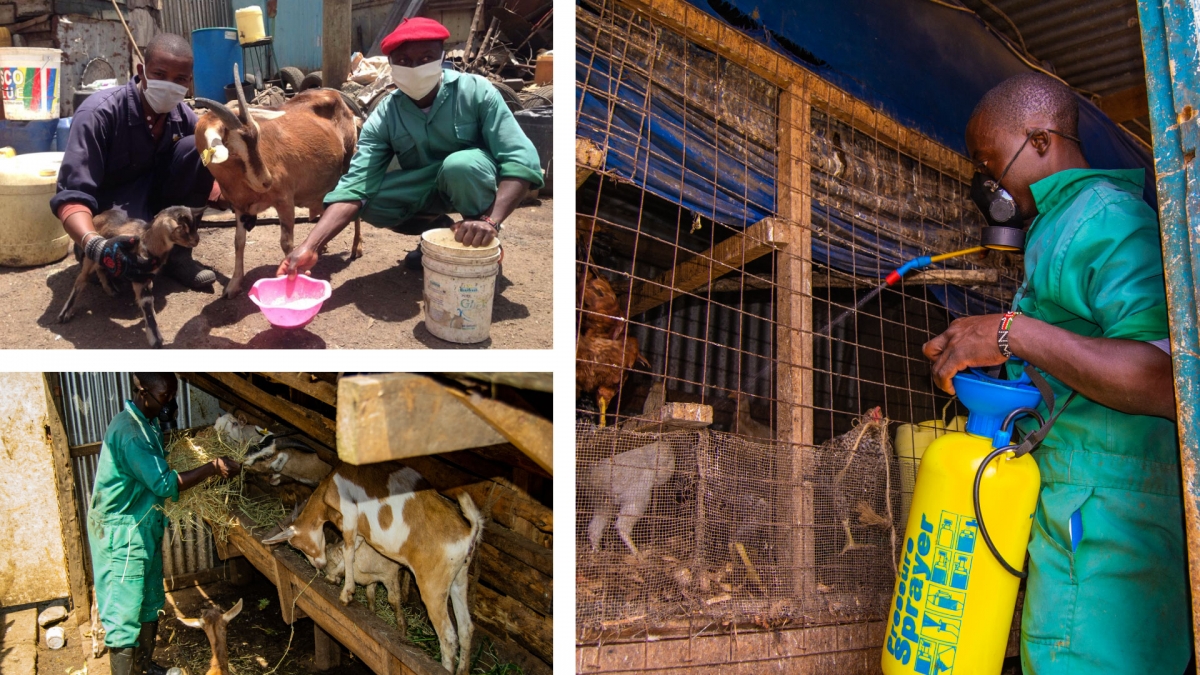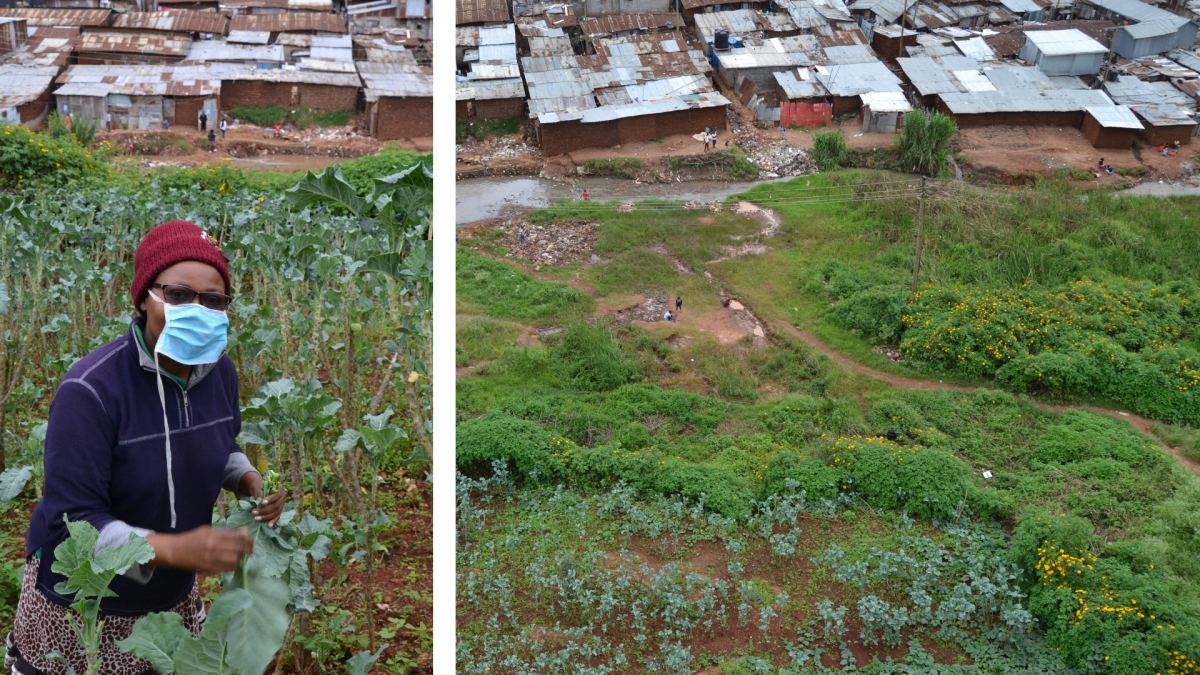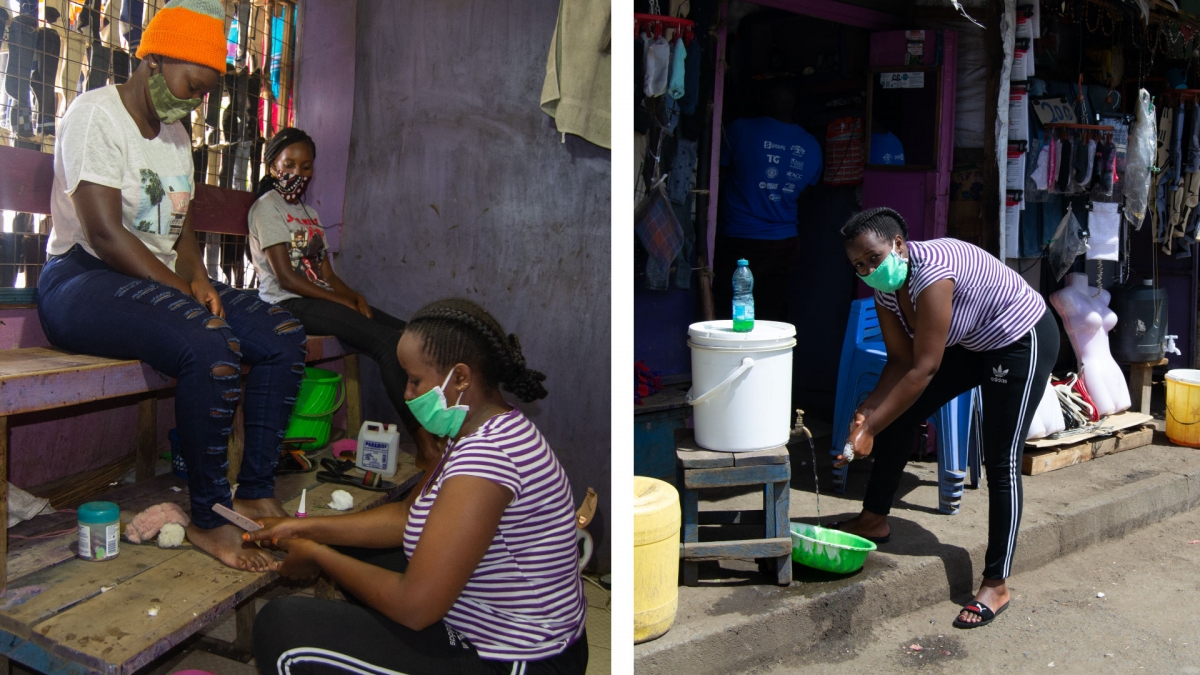There have been far reaching effects on Nairobi’s economy following the COVID-19 crisis, with the informal sector being the most severely affected. Food accounts for almost half of the trade in the city’s informal sector, and the containment measures have been disproportionately felt by farmers, market sellers and consumers.
Farmers were unable to access inputs from outside Nairobi and traders experienced a significant drop in sales, while the urban poor consumers lost livelihoods, exposing them to increased levels of food insecurity. The crisis further aggravated the higher risks faced by vulnerable persons even in normal times.
So how are these farmers, traders, consumers and vulnerable persons faring during the crisis? To seek answers and insights, Mazingira Institute with support from the CGIAR Research Program on Water, Land and Ecosystems (WLE), conducted case studies with 29 respondents from these four demographics.
Interviews centered on four topics:
- effects of COVID-19 on their food production or distribution
- adherence to the containment measures
- their views on what different actors can do mitigate food insecurity for the urban poor
- coping mechanisms they have been using in response to the sudden big change
The case studies were conducted to establish the situation of local food production and distribution in Nairobi in the times of COVID-19. Below are a few photo stories picked from the sample.
Nairobi lockdown made it difficult for youth dairy goat farmers to access fodder

Kevin and Sylvester are members of an urban farming youth group in an informal settlement in Nairobi. They specialize in dairy goats but also produce indigenous chicken and vegetables. The milk produced is used by their households and for sale to their neighbors. Kevin says their urban agriculture contributes to food and nutrition security in the community since most of their dairy goat milk customers are parents with children under the age of 5, as well as adults with diverse health complications.
The disruption of movement between the Nairobi metropolitan area and the surrounding regions has made it difficult for them to access fodder. Inadequate fodder has led to low production, sales and income, interfering with farm operations. In terms of sales, Sylvestersays that “customers are not buying milk in large quantities anymore, and we are left with a surplus which we have to drink, otherwise it would go to waste.”
Residents buy vegetables from a neighborhood garden to avoid main food markets

Jemimah produces kale, spinach, pumpkins and rabbits on a plot next to the school where she teaches. She is happy that her pupils participate in the farm activities, and says, “the kids like the farm. Infact they are the ones who feed the rabbits.” She adds, “I take the time to teach and interest them in urban agriculture and hope they grow up to become superb urban farmers!”
As a vegetable producer, Jemimah has had a different experience from that of Kevin and Sylvester, and has continued with her production undisrupted. This is due to local access to inputs such as seedlings from local agro-vets and manure from neighbors keeping livestock. Her sales have increased as people avoid buying at the main food markets.
“Since the outbreak, people havebeen buying directly from my farm because my vegetables have low risk of contamination since there is limited food handling by people from one point to another.” She further urges people to practise urban agriculture to boost household food security.
A roadside vegetable vendor loses customers as they are not sure if she has COVID-19

Francisca is a roadside vegetable trader, selling indigenous vegetables such as African nightshade, Jews’ mallow, tomatoes and onions. She gets her vegetables from peri-urban farms in the region. COVID-19 restrictions have increased the cost of public transport, making it difficult for her to commute regularly. She used to go every day, now she goes once a week.
Her sales have decreased, sometimes having stock leftover. Before the COVID-19 crisis, she made sales of around USD 5 every day, but now only USD 1. In explaining about thedrop in sales, she said “People have lost jobs and now they lack enough money to buy foodas they used to”. She added “People also fear buying from me, since they are not sure if I have Corona virus. Some now prefer to buy directly from the farms.” As a coping mechanism, she has reduced her stock intake.
A young, urban, poor consumer takes drastic measures to cope with her loss of employment

Margaret, in the purple striped shirt, used to work in a restaurant but it closed down to adhere to the guidelines on COVID-19 containment. She’s now a casual worker as a beautician in a nail parlor, earning USD 1.50 per day – barely enough to sustain her. She is not able to keep to social distancing rules in the nail parlor, but regularly washes her hands and wears a mask.
The loss of a stable income made it difficult for her to buy food in adequate quality and quantity. Her son lived with her before, however she has had to relocate him to the countryside to reduce the food needs for her household.
“I took my son upcountry to stay with my parents, because I could not afford to comfortably feed him and myself, ” she explains.
Other coping mechanisms for Margaret have been reducing frequency of meals — often skipping lunch — and buying only the basic food commodities such as maize flour and vegetables, avoiding animal-based proteins and fruits. She now only buys food in small quantities since she lacks enough money to stockpile.
To mitigate food insecurity for the urban poorin the current crisis, Margret says the government could offer food relief or cash transfers whereas businesses could reduce food prices. She noted that NGOs were already donating food in her area, though she has not received any.
Highly vulnerable Lupus sufferer unable to access her medication due to price increases

Wacera has Lupus, a condition that makes her immune system attack her organs and tissue. This adversely affects her immune systemand increases the risk of complications fromCOVID-19. The health crisis has made it difficult for her to buy food and adequate quantities of her medication, Hydroxychloroquine, a drug used in Lupus treatment.
“The price of Hydroxychloroquine has increased by about 70% as there are rumors it can be used to treat COVID-19,” she says. She has had to cut back on consumption of indigenous vegetables, goat milk, cereals and fruits due to financial constraints.
Aware of her higher risk of contracting Corona virus, Wacera has been strictly observing the WHO guidelines. She stays home and leaves only when absolutely necessary, and when she does, she wears a mask and observes social distancing rules. “I sanitize regularly and always carry a hand sanitizer in my bag.”
Wacera noted that the government, local businesses and NGOs could give food donations to vulnerable persons to mitigate their food insecurity. She says on a personal level, people can practice urban agriculture to produce food for household consumption.
A way forward to build back better
Informal food operations in Nairobi are at the heart of Nairobi’s informal economy, both as a source of livelihood and a means through which residents access affordable, fresh and readily available food. However, it has been demonstrated that these informal food operations are highly vulnerable to systemic shocks, particularly ones that rely on complex supply chains.
Vegetable producers proved to be resilient due to their local access to inputs while livestock producers suffered the most as they relied on long, complex supply chains for input supply from outside Nairobi. Traders could source their supplies locally as well.
Consumers couldpractice urban agriculture to boost household food security. For the vulnerable persons, the government should upscale social security systems to cushion them against the effects of a crisis, considering that they are already disproportionately affected even in normal times. It is therefore imperative to build a more resilient food system for Nairobi as this will cushion farmers, traders, consumers and vulnerable persons from crisis that arise from such systemic shocks as the COVID-19 pandemic and it will surely be a way to build back better.
This study is funded by the CGIAR Research Programme on Water Land and Ecosystems (WLE) led by the International Water Management Institute (IWMI) and it is connected to the Urban Food System Project of Mazingira Institute.
---
Thrive blog is a space for independent thought and aims to stimulate discussion among sustainable agriculture researchers and the public. Blogs are facilitated by the CGIAR Research Program on Water, Land and Ecosystems (WLE) but reflect the opinions and information of the authors only and not necessarily those of WLE and its donors or partners.
WLE and partners are supported by CGIAR Trust Fund Contributors, including: ACIAR, DGIS, FCDO, SDC, Sida and others.










